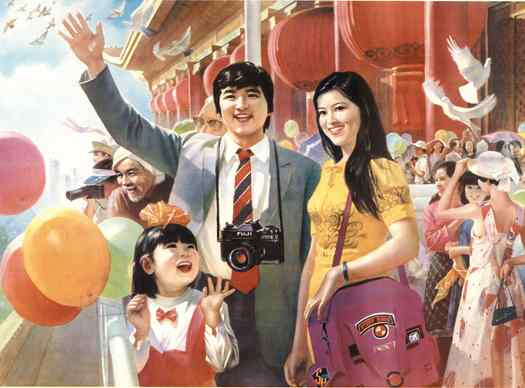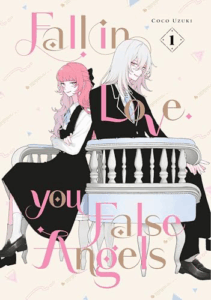Red Tourism in China | The Official Schoolgirl Milky Crisis Blog

At a loose end in Shanghai, I dropped by the site of the first congress of the Communist Party of China, a nondescript building at what used to be 106 Rue Wantz in the French Concession. A small museum inside chronicles the various individuals and events that literally got that Party started, although most of the Chinese visitors were keener to have their photograph taken by the entirely everyday front door with its “106” nameplate.
I was more excited by the presence of a bona fide First Congress of the Communist Party of China gift shop, where I shopped in a frenzy for my First Congress of the Communist Party of China umbrella, my First Congress of the Communist Party of China pen, my First Congress of the Communist Party of China tote bags, and my First Congress of the Communist Party of China fridge magnet. There was even an I’ve Been to the First Congress of the Communist Party of China frame outside, where I had my photograph taken, loaded with First Congress of the Communist Party of China swag, while Chinese onlookers giggled nervously and said: “Heehee, foreigner.”
For author Lin Chunfeng, I am one of millions of people taking part in the subject of his new book, Red Tourism in China: Commodification of Propaganda. I have always been interested in some of the big Communist displays of statuary and commemoration, such as the Martyrs Cemetery in Shanghai and the Martyrs Park in Guangzhou, but Lin’s book examines such sites as part of a growing and, in some sense, relatively recent phenomenon, as the Communist Party attempts to merge the disparate disciplines of education, propaganda, national cohesion and social harmony. Today, Red Tourism is a massive component of Chinese leisure travel, amounting to 540 million visits a year, or 20% of all domestic Chinese tourism. To put this in context, private investment in tourist experiences in Mao’s old base at Yan’an has topped 50 billion yuan, ten times the amount spent to build Shanghai Disneyland.
Not every venture is a resounding success. Lin recounts the folly of the great golden “Mega Mao” that was erected by an earnest entrepreneur in Henan province in 2016, only to be pulled down at the orders of the authorities shortly before it was completed. The precise reason is unclear – possibly, the Trumpish extreme of the golden Mao was too much even for garish Chinese pop culture, with social media commentators archly commenting on its evocation of Shelley’s Ozymandias. Others pointed to the bitter irony of a statue glorifying the Sun in Our Hearts in the province that arguably suffered the most at the hands of his social experiments. The truth probably lies somewhere in between, tied up in complex issues over patriotic land use and the unsanctioned rezoning of an agricultural area.
A large chunk of Lin’s book is taken up with a discussion of the history and culture of tourism and propaganda in China. He points out that ancient progressions by emperors and princes around the country were often ostensibly undertaken as acts of religious pilgrimage, although the “long, grand journey of the monarch to the ceremony site was often just as propagandistic as the ritual ceremonies for legitimating monarchical power.” And Lin points out that it’s not just the monarchs who are putting on a performance. “Tourism at the grassroots,” he suggests, “has gone mostly unmentioned in both historical records and modern retellings, or at the most, framed as celebrations of holidays along with other rituals and ceremonies that somehow involved travel.”
In part, this performance of pilgrimage can be laid at the feet of Confucianism, which Lin terms an “anti-leisure” philosophy that early tourist companies in China had to wilfully fight among the middle classes, convincing them travel for fun was both desirable and appropriate. Paramount among such entrepreneurs was Chen Guangfu (1881-1976), the Ivy-league alumnus who founded China’s first locally run travel agency back in his native Shanghai, the China Travel Service (CTS). It was Chen who came up with the idea of giving away 20,000 travel pamphlets at the 1933 Chicago World’s Fair, hiring the journalist Edgar Snow to knock up five different accounts of travel tips, framed as anti-Japanese polemics.
After the end of WW2, tourism was first pushed by a professor from the Department of Foreign Relations of the University of Politics, who argued that it was “not merely a form of education, but a very important part of education in general.” Here, Lin tracks the interests in education and propaganda (a word that he carefully argues has nowhere near as negative an implication in China as it does in the West) of both the Communists and Nationalists, particularly when it came to promoting the commemoration of the war against the Japanese, and pointedly celebrating 1950s China as a melting pot of multiple ethnic groups. Lin identifies some of the mass movements of the Cultural Revolution as a prototype of today’s “Red Tourism”, noting the swift declaration of the Great Rally – a series of sites with revolutionary importance, which no true Red Guard should miss out on. Such fanatic pilgrimages of the Party faithful were eventually shut down by the Party itself in 1967, after several people suffocated on overcrowded trains on their way to lay wreaths at sites like Yan’an and Jinggangshan.
As China “opened up” following the death of Mao, tourism was one of the first topics on the mind of the reformer Deng Xiaoping, who had his beady eye on the potential of a permanently renewable resource of American hard currency. “If each foreign tourist would spend $1000 in China,” he argued in 1978, “with a total of 10 million tourists visiting China every year, China could earn $10 billion.” But Deng’s vision, of course, was a more traditional form of leisure travel – the Great Wall (which was soon opened to visitors on multiple locations), the Terracotta Army, the Forbidden City and whatnot. For many foreigners, the experience of China would be a once-in-a-lifetime whistlestop fortnight of bussing, banquets and an overload of temples.
Official endorsement of tourism as a patriotic and educational Party phenomenon, would not come until 1991, two years after the Tiananmen Square protests caused the authorities to question if modern youth was on-message. Lin smartly relates it to a generational conflict, not only over a young China that had not experienced the formative conflicts, but of the “Little Emperors” born after the instigation of the One-Child Policy, regarded by some sectors as snooty snowflakes with no recollection of true hardship. The actual term Red Tourism (hongse lüyou) is first seen in a magazine article in 1996.
Lin has some great number-crunching on the economics of Red Tourism, which is often counter-intuitive or unexpected. He notes that many sites are piously free-entry, which disincentivises everyday tour guides from bringing their groups there in search of the usual rake-off. Conversely, a suitably high-level Redness in local sites can hoist the local economy way above its expected height –bringing in amenities usually reserved for much higher-tier cities. Apparently, the average Baskin-Robbins franchisee will not get out of bed for a third-tier city, unless it is guaranteed to have a regular influx of middle-class tourists. Tutting over his noodles in Yan’an, Lin observes that they have cost him three times as much as they would in the major metropolis at Baoji.
Lin’s chief case study is the city of Yan’an, the site of Mao’s 1930s guerrilla resistance, once favoured because it was remote, inhospitable and inaccessible. Now it is a mecca of Red Tourism, blessed by ultra-modern transport links – starting in 2025, it will be just 2.5 hours from Xi’an by bullet train – where the economic impact leisure travel has outstripped agriculture in the local economy. As is true all over China, out-of-work farmers form a huge labour pool for the tourist trade, which is one of the reasons why female soldiery is over-represented in the local re-enactment shows.
And what shows! Lin zooms in on Yan’an Defence, an explosive military spectacular re-enacting life in the Communist bolthole, interrupted by a sudden assault by Nationalist bombers. Originally performed four times a day to appreciative and occasionally fearful crowds, it was one of the lynchpins of the Yan’an experience, unwisely boasting in its advertising of featuring “real guns and real bullets” – one of which killed a performer in 2010. Lin gets to see Yan’an Defence at the height of its glory days; today, apparently, it is only put on once a day, with a reduced complement of “one horse and three donkeys.”
A similar celebration of the Battle of Taierzhuang requires so much explosives per performance that it cannot possibly operate without government contacts. Lin reports on multiple daily onstage injuries for the performers, who must wade through the pyrotechnics of 800 blanks and 80 explosions per show, rattling their eardrums and scorching their costumes. In 2014, preparations for a re-enactment of the Liaoshen Campaign are marred by an unscheduled explosion which claims the lives of two pyro-technicians, two workers, and three Party officials who happened to be walking past.
Lin’s reporting is not only a captivating glimpse of the lives of such performers, often uneducated, unemployed surplus labourers, exposed to the elements, replaying traumatic military actions several times a day without holidays or injury pay. He also delves into the way that such disasters were “handled” through the use of “soft news” (ruanwen), paid newspaper content that is now largely discouraged in China, although certain Chinese institutions are happy to throw money at it overseas, outside the Party’s jurisdiction.
In such remote areas, Lin smartly follows the money, investigating the way in which the authorities will happily help foster a Red Tourism site as long as their grants return double the investment. They will hand over a million dollars for Famous Pond Mao Once Looked At experience – not as frivolous as it sounds; such a site is one of the barrel-scraping 82 locations in the Chairman’s Shaoshan birthplace – but only if they see two million returned in the form of local infrastructure, transport links, job creation and businesses.
Lin’s book is an engaging introduction to the topic of Red Tourism, and presents a long view of it, dropping back in on his Yan’an case study to observe how it evolves over the years. This is a much overlooked element of so many studies in tourism, which tend to regard each phenomenon as fixed and unchanging. He returns late in the book to sample Golden Yan’an, a new “old” town built on expropriated farmland, and seemingly offering employment to the former farmers by getting them to dress up in a multi-faceted Chinese history experience.
Lin points out the economic issues that are associated with this, as policy wonks neglect to mention to the farmers that the very prosperity they are promised is fated to push up local prices, and devalue the compensation they received for their land, as well as the wages they might earn working on the site. He also has a stern critical eye for Golden Yan’an as a modular experience, with one street evoking the Song dynasty, and another the Qing, while a third recreates the era of Yan’an as a revolutionary headquarters. Shrewdly, Lin points out the difference that the visitors themselves can bring as participants, noting the contrast between an almost deserted street populated by pious statues, versus a vibrant marketplace thronging with cosplaying visitors.
It’s difficult to get the visitors to provide their own entertainment, of course, but sometimes it pays dividends. In its heyday, Yan’an Defence would even charge visitors $2 to dress up as revolutionaries and cower from the bullets onstage, rather than in the bleachers. In a perfect world, the visitors can bring their own passion – one of the most moving sites I have visited outside China is Ellis Island in New York, not for the museum to be found there, but for the emotional reaction of the many visitors, confronted with the fact that they are standing on the very spot where their ancestors became Americans.
In the case of Lijiang, famously lampooned by Chen Qiufan as a site of ersatz memories, I have witnessed its rapid transformation from ancient town into classy shopping mall, and as the initial franchises pulled out, into a glorified theme park like everywhere else, that charges an admission fee to the town itself, as if admitting there is nothing worth buying there. But even then, there are hacks and subversions. In 2017, I heard that Lijiang had become the hook-up capital of China, with travelling swingers cheerfully buying their three-day town admission, uncaring about the lack of night-time entertainment, because they were lighting up dating apps like a Christmas tree and meeting each other for sordid orgies. So, at least, I was told by a girl in a bobble hat, halfway up a mountain in Guizhou. Is it still true, seven years on? A lot can change in the world of Chinese tourism.
Jonathan Clements is the author of A Brief History of China. Lin Chunfeng’s Red Tourism in China: Commodification of Propaganda is published by Routledge.














